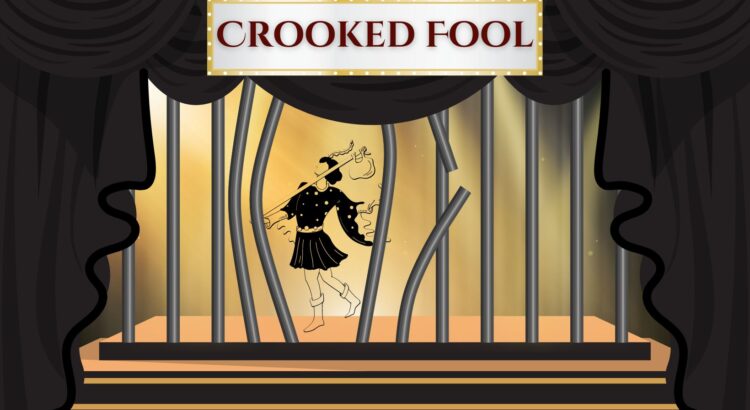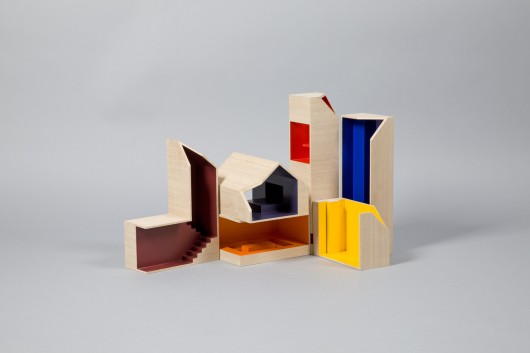I have an old, faded bumper sticker on my car that reads, “I can’t. I have rehearsal.” I’m sure it was given to me as a gift, though I can’t remember when or by whom. I do remember laughing when I first held it in my hands, mostly out of genuine mirth, understanding the joke, but partially also out of ruefulness.
Though there were a few earlier experiences with middle school classes and the like, I first became involved in theatre “for real” when I was 14 and attending Interlochen Arts Academy. On top of a 9-hour school day, I was expected to complete multiple large projects each semester, complete a certain number of community service hours, attend mandatory performances, rehearse for my own performances, and practice classical guitar on a regular basis, all in addition to the typical high school homework. I can’t remember for sure if this was ever explicitly said, but it very much seemed like we were being prepared to work at this level indefinitely “out in the real world.” And I have. My work ethic changed as a result of my time there, and even some grad students I know marvel at the kind of schedule I often keep.
In part because the arts are so undervalued and underfunded in the US, many of us cannot fund our lives through our hard-earned creative skills alone. Perhaps Interlochen was preparing me for the reality that I’d likely have to hold down a fulltime survival job in addition to any creative work that I wanted to do. If that was the case, they’re unfortunately probably right. Having dipped my toe into the world of professional theatre, that is in fact what I and just about everyone I know has had to do.
But the failings of late-stage American capitalism aside, we need to take a breath when it comes to the emphasis placed on work ethic. It’s not healthy for anybody, but when it’s also slamming the door in the faces of Disabled artists.
In theatre, I was taught to accept a 3-hour rehearsal after an 8-hour workday for weeks on end. I was conditioned never to consider adding a conflict after the rehearsal schedule had been posted, whether the reason was an unexpected family obligation or a debilitating migraine. I was taught to ignore bodily needs, pain, and exhaustion if they were going to in any way alter the flow of rehearsal.
I can remember a show I did when I was 16 where I was asked to stand at attention onstage for a large portion of the show, which set off days of back pain. I finally gave in and asked the director if I could kneel down during rehearsal. He agreed, but no mention was ever made of altering the blocking so that I wouldn’t be in pain, and I didn’t dare ask. At the time, I accepted pain as something I would have to put up with in order to put on a good show. “The show must go on” and I would have to “leave my baggage at the door.”
A solid decade later, my perspective has changed, and I’m gonna call it: that shit is ableist.
When we demand this level of grind from artists, on top of reducing their bodies to value-making cogs in a capitalist machine (even if the machine is gloriously creative), we are making tacit assumptions that all bodies have the same capabilities and use energy the same way. We assume that if something is hard, but doable for me, and doesn’t cause too much damage to my body, then it must be true for someone else. And by refusing to make accommodations, we’re basically saying that if a body can’t get with this overwhelming program, they don’t deserve a spot in the room. Their point of view is eliminated from the crucial discourse we take part in through the arts, ensuring that dominant and often oppressive perspectives are never challenged. And if we assert that making rehearsal and performance spaces more accessible in some way erodes excellence, we’re not only laying bare our own lack of creativity and vision in coming up with solutions, we’re also asserting that disability-friendly theatre, and thereby Disabled perspectives, will always be less than.
Some years after that back pain-ridden production, I ended up going through major spinal surgery in the hopes of correcting the pain and visible spinal deformity that I’d dealt with for my first decade in theatre. Less than a year later, I began an intensive program in physical theatre at Dell’arte International. With class 9-5 every day, nightly rehearsals, and attendance policies that made it nearly impossible to take even a day to care for one’s body, I can see where some might question if that’s really the place for myself as a Disabled performer to be. But this, again, is actually a question of my right to make art, to make my perspective heard, and to use my body, Disabled or no, in the ways that I choose. If you’re saying that this space should not have accommodated me, what you’re actually saying is that I should not have the right to make theatre.
I ended up not only completing the program with flying colors, but being voted ensemble director by my peers. I was one of seven graduates that year. But by the end of the program, I was also reckoning with a difficult truth: the culture of theatre, as it stands now, is inherently ableist and would make no space for me. I spent a solid year after leaving the program genuinely thinking that I was going to have to throw in the towel on over a decade of work and stop performing. If I couldn’t push through pain and fatigue and beat my body into performing in ways that were convenient and desirable for able-bodied educators and directors, what hope was there?
Capitalism only values bodies if they can produce, and for this reason, bodies like mine are not valued. Sacred and ancient though it may be, theatre culture has, on the whole, also adopted this thinking. And in addition to denying Disabled artists a place at the table, this thinking reduces all bodies to their production capacity. An actor is not valued as a human being until they can get cast in a large production, satisfy their director, and bring in audience. And if I’m being honest, I’ve felt that dehumanization keenly even when disability was not the main issue I was experiencing during a show.
But what if we took accessibility as a creative challenge? And what if we decided to value the human beings in the room beyond their ability to keep a convenient rehearsal room and sell tickets? Doing these things does not erode the quality of theatre; in fact, taking on these new, innovative, creative challenges may serve to elevate the artform further. What possibilities have we stubbornly refused to explore?
I will be the first to say that theatre is sacred. But so am I. And you can’t make theatre without people.






